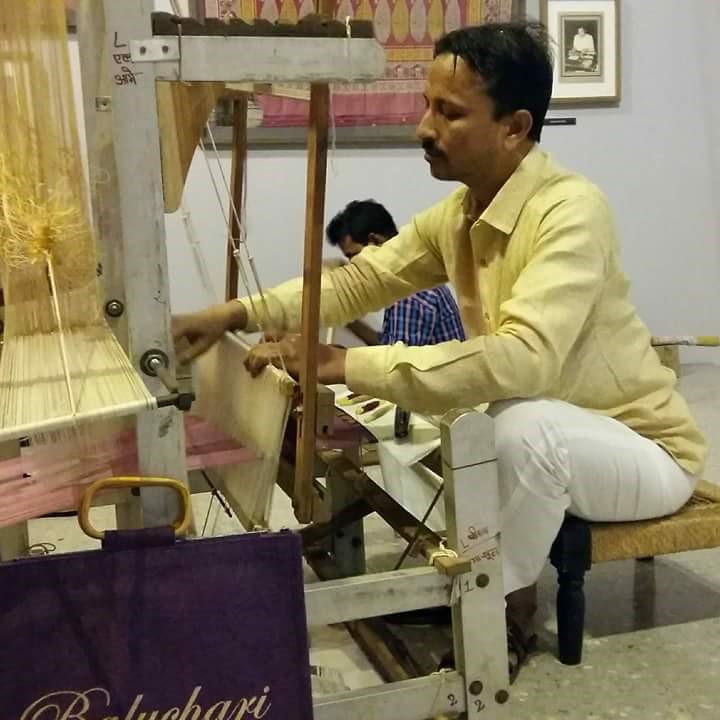
Art history/ Historiography, Crafts, Handlooms, Art, Craftspersons/ Artisanal, Education/Learning
On the Construction of Himru and the naksha: The Ahmad Family Legacy.
Ahmad, Naseem
July, 2021
I stand here, with the intention of briefing you about the methodology and richness of the naksha (pattern) which goes into the weaving of the Himru garment, something which was passed down to be by my great-grandfather, Shri Ali Hasan alias Kalloo Hafiz, who was also honored with the Padmashree award for his contribution to the weaving and handicraft industry. This picture shows him working on a jala. There a number of steps preceding the creation of the naksha. The first step is to inscribe it on paper and then weave it along the respective pattern thus formulated, which ultimately ends up determining the amount of thread and the pattern of the garment that has to be made. There is a methodology of doing it which has been handed down to us, as craftsmen. My grandfather, Zafar Ali, is shown here performing the afore-mentioned action and the picture on the left contains a complete naksha, which will then be taken to the loom for weaving – the two are entirely different processes and often a cause of perplexity. To create a respective design into a naksha is an aspect of the special knowledge possessed by us as artisans. A thick cotton thread is required in the process of creating the design, which will be made into a chaukhri in order to create a block of length 12/16 inches. Consumption of betel leaves was pretty popular amongst ancient craftsmen of this tradition, which led to the coloration of the thread, something that my grandfather also partook in, occasionally. He was awarded the national award for one of his exquiste Baluchari pieces.
![]()
This is a preview. To access all the essays on the Global InCH Journal a modest subscription cost is being levied to cover costs of hosting, editing, peer reviewing etc. To subscribe, Click Here.



